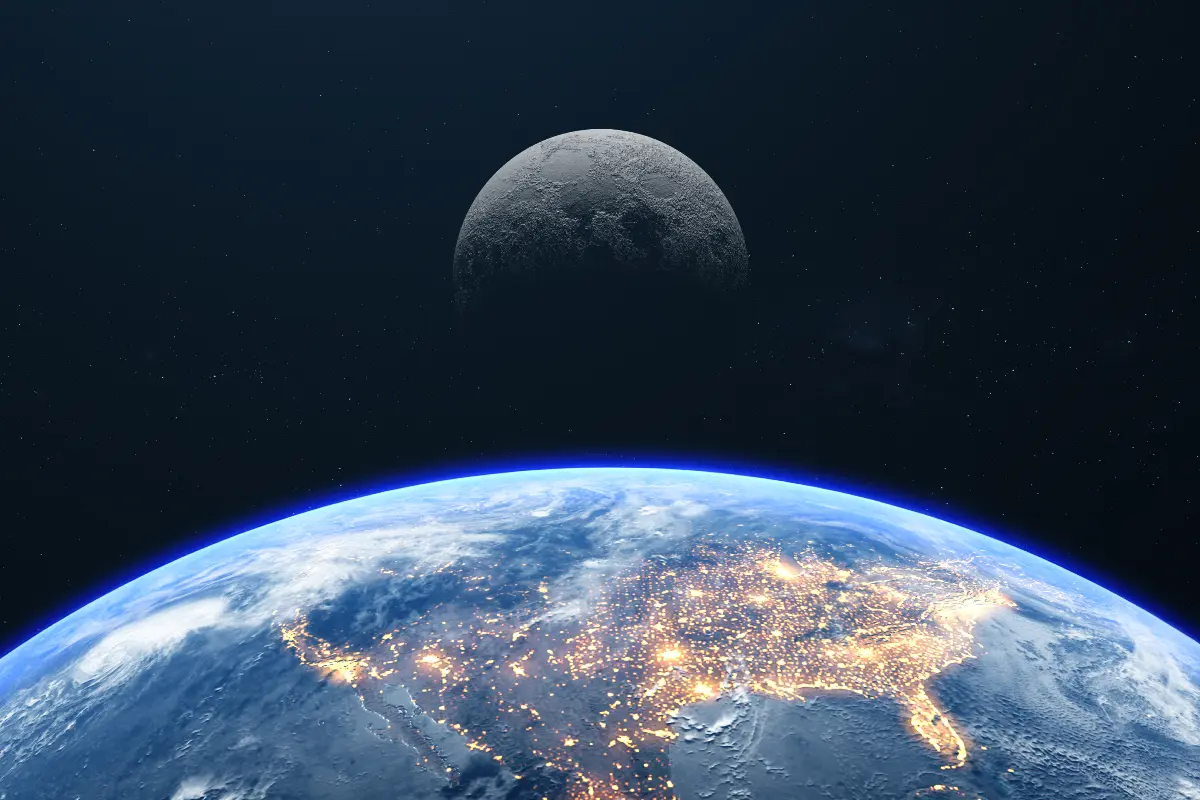As twilight blankets the Earth, a familiar luminescent orb ascends the horizon, casting its enigmatic glow across the landscape. The Moon, Earth's sole natural satellite, has captivated human imagination since time immemorial. But beyond its beauty and the mythologies it has inspired, the Moon harbours a trove of curiosities you might not yet have stumbled upon.
Let's traverse this celestial path, revealing some of the most fascinating aspects of the Moon that, despite its constant presence, remain relatively unknown to many.

For starters, the Moon is moving away from Earth at approximately 3.8 centimetres per year. This gradual migration is a result of tidal forces between our planet and its satellite. We may not sense it in our lifetimes, but this slow departure will ultimately lead to longer days on Earth as our rotation slows down to maintain the gravitational dance with our celestial partner.
Delving into its surface, most of us know about the 'man on the Moon', or more aptly, the lunar mare or 'seas' that form the face we often personify. However, the Moon's surface is much more than what meets the eye. It is covered in a fine, dark dust known as regolith, created by millennia of meteorite impacts. What's more intriguing is that the regolith is not only a witness to the solar system's history but might one day become a vital resource for lunar colonists, offering materials for construction, shielding, and maybe even water extraction.
Another startling fact is that the Moon has earthquakes, known as 'moonquakes'. These are less common than earthquakes, but can be much deeper and last longer. Moonquakes occur due to tidal stresses linked to the Earth's gravitational pull and can register up to 5.5 on the Richter scale. These quakes also provide valuable clues about the Moon’s interior, which, unlike Earth, has a tiny and only partially molten core.
In terms of atmosphere, the Moon has an exosphere so tenuous that it’s almost a vacuum. With no significant atmosphere to protect its surface, the Moon is exposed to the harsh environment of space, including solar winds and cosmic radiation. This is why temperatures on the lunar surface can be extreme, ranging from a blistering 127 degrees Celsius during the day to a frigid minus 173 degrees Celsius at night.

Perhaps even less known is that the Moon has water ice, preserved in the permanent shadow of craters near its poles. These reserves are of immense interest as they could one day be used to sustain human life or to produce fuel for space exploration. While the actual quantity of this water ice is still a matter of research, its presence challenges our earlier understanding of the Moon as a completely dry world.
Also, despite popular belief, various missions have proven that the Moon has its own rust—iron oxide. This discovery puzzled scientists, as rusting typically requires both oxygen and water, which are supposedly rare on the Moon. It's believed that the oxygen needed for this process comes from Earth’s atmosphere, transported by the planet's magnetic field, while water may be supplied by the ice deposits in shadowed lunar regions.
Then there's the mystery of the Moon's origination. Prevailing theories suggest that it formed from the debris left when a Mars-sized object collided with Earth about 4.5 billion years ago. This colossal impact hypothesis explains many of the Moon's peculiarities, including its composition and the size ratio between the Moon and Earth, which is unusual compared to other planetary bodies and their satellites.
Lastly, if you've ever been moonstruck by the sight of a 'supermoon', you've observed the Moon when it's at the closest point of its orbit to Earth, known as perigee. At this juncture, it appears larger and brighter, but the effect is often subtly enhanced by the human psyche. In reality, while the difference in size and brightness can be measured, it's not as grand as one might expect.
While many may gaze upon the Moon and simply appreciate its luminescence against the night canvas, it holds secrets and wonders that continue to challenge our understanding. The Moon, Earth's celestial partner, is not just a beacon in our sky—it's a doorway to a deeper appreciation of our place in the cosmos and the complexity of the universe we inhabit. As we continue to explore and unlock its mysteries, who knows what other astonishing facts we might uncover?
